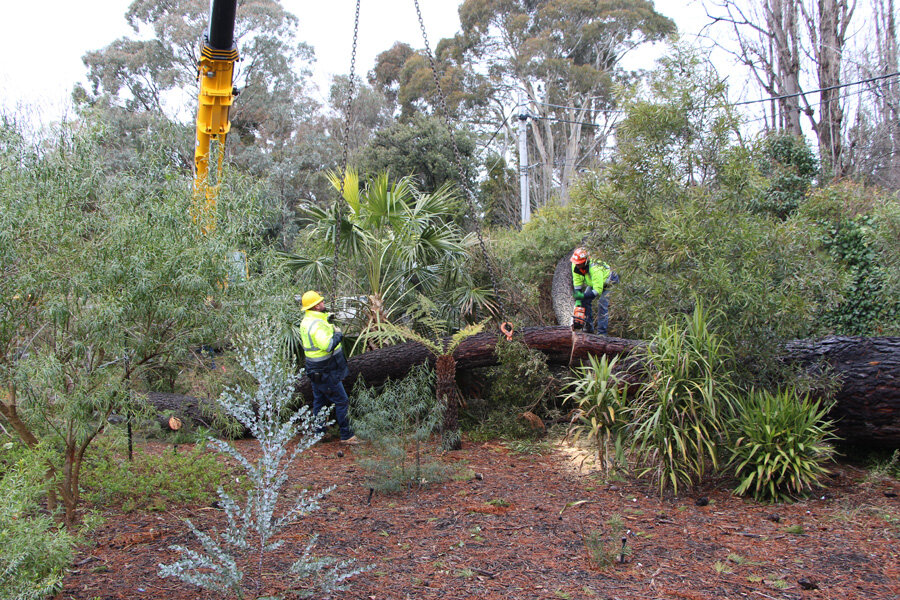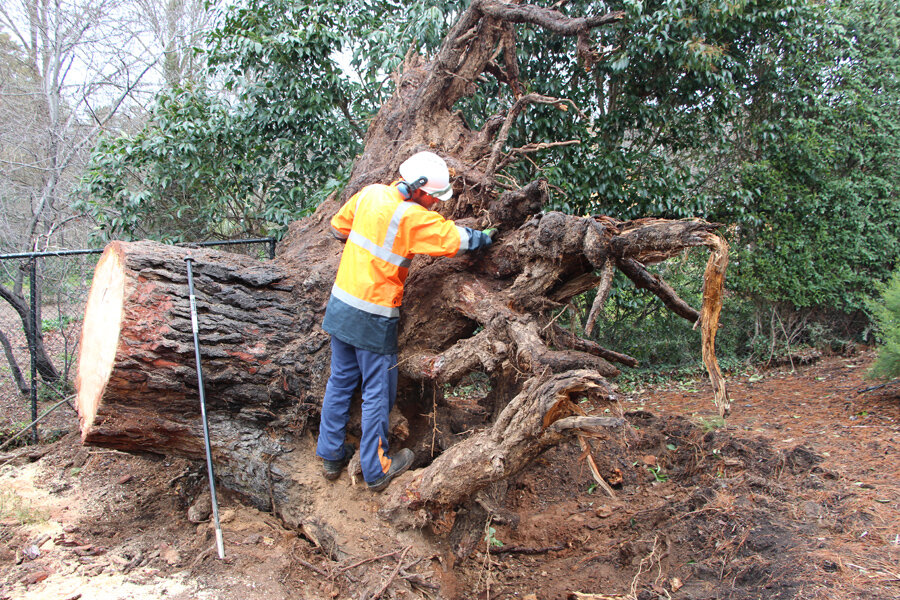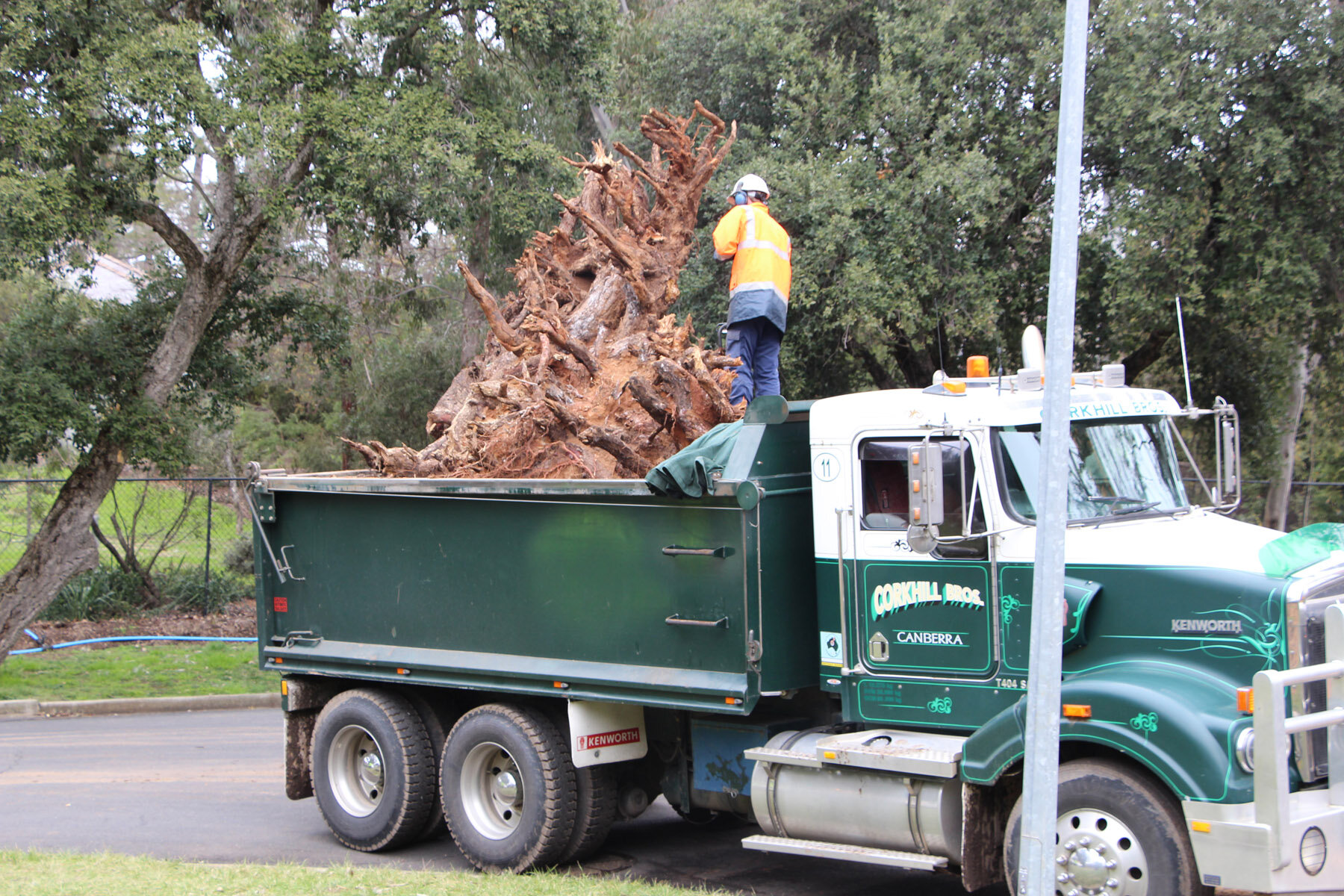When disaster strikes
On the night of Friday 22 July, or maybe the morning of Saturday 23 July 2016, the last of our 85 year old pine trees (Pinus radiata) crashed to the ground. During that night in Canberra we had wind gusts up to 80 k/hour and the ground was sodden from record rainfall. We had one of the wettest Junes ever recorded in the capital that year. The venerable pine removed most of the plantings in that corner of the garden. It took out our collection of callistemons, then 13 years old, a large Casuarina cunninghamii of similar age, and our much beloved Silky Oak (Grevillea robusta).
The planting of Correa ‘Canberra Bells’ were flattened, as were a group of Hakea eriantha. The well established front hedge of Callistemon salignus and Callistemon ‘Firebrand’ will have to be resurrected in that section. We also lost our mature Golden Wattle (Acacia pycnantha) in another section of the garden. Acacia pycnantha went down with its buds about to open. However, as is always the case in disasters, many treasures were spared – a group of Cordyline stricta nursed along through many Canberra winters, a recent planting of Myoporum floribundum x batae, Brachychiton ‘Griffith Pink’, a large patch of Eremophila subfloccosa and several Calothamnus.
We have removed the old pine trees, (at vast expense!), from around the boundary of our property over the last few years. They were senescing and dropping limbs, but we left one last pine which looked healthy and was a popular perch for our local birds. This tree also had a nest-box on it which had been used in past seasons. This box is still in use, Ben discovered, by a ring-tailed possum, even after the demise of the tree. The nest box is on its side but still occupied happily by a ring-tail possum. The possum does not mind that his home has gone massively down-market! The Pinus radiata upturned root ball was over 3 metres tall and 6 tonnes in weight. Below you can see the devastating effect of the pine on the garden.
We must look on this area as an exciting opportunity to plant anew. I well remember the 1987 ‘Great Storm’ in England, the worst for over 300 years, which claimed many lives and felled over 15 million trees. I then admired the horticulturalists at Kew, while mourning their great trees, also managed to see it as a once-in-a-lifetime opportunity to plant afresh. Here, in microcosm, we have the same opportunity.
After the removal of the tree and its huge stump, weighing 6 tonnes, there was a large gap and many remaining stumps of callistemons that had filled the area before the tree came down.
Above on the left is just after the disaster in 2016 and on the right the same area in 2021. The remaining Callistemon salignus from the front hedge (the 3 trunks in the right of the left hand picture) is visible in the right photo on the right side as a very large bush with the new C. salignus plants visible over the hedge of Correa alba planted in front. The callistemon stumps left behind the hedge have regrown into bushes and we have planted a variety of other plants, including many Grevilleas,













